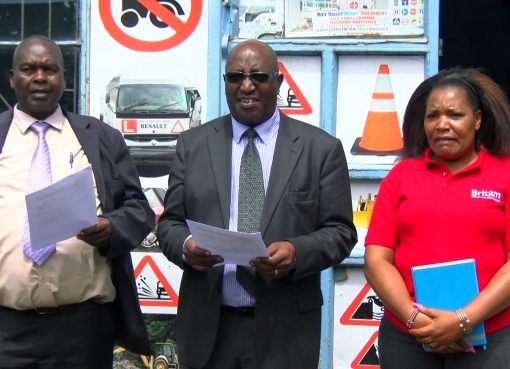Kenya is working together with regional neighbours in efforts to forge a stronger collaboration for sustainable management of migratory and new emerging pests and diseases.
Agriculture and Livestock Development Cabinet Secretary (CS) Dr Andrew Karanja said that locusts and other migratory pests have repeatedly demonstrated that they do not respect man-made political boundaries as they travel from one country to another, crossing internationally accepted political boundaries to wreak havoc on crops and pastures.
“It is for this reason that we should appreciate, maintain, and strengthen the existing regional cooperation in fighting these common enemies, which have been a menace to man since biblical times,” said Dr. Karanja.
The CS made the remarks in Nairobi on Thursday when he officially opened the 40th Regular Session of the Governing Council of Ministers of the International Red Locust Control Organisation for Central and Southern Africa (IRLCO-CSA).
Dr. Karanja explained that it is important that member states pool resources together to facilitate burden sharing, expertise, and equipment in the organisation as a worthy cause and a good example of how cooperation can promote and bring about regional development.
“I would like to thank IRLCO-CSA for its participation in the desert locust control operation in Kenya in 2019-2021, when the country faced a major invasion of the pest,” said Dr. Karanja.
The CS highlighted that the organisation has so far been able to fulfil its mandate of preventing the re-occurrence of locust plagues in the region and assisting member countries in the management of other migratory pests.
“The threat of migratory pests is real, and Kenya has had her own share. In the year 2019-2021, the nation faced the worst desert locust’s invasion after a calm period of over 70 years. The swarms spread in over 28 counties where thousands of hectares of pasture and crop land were under threat,” explained Dr. Karanja.
He added that in the year 2022, the nation again faced an extended African armyworm outbreak, spreading from the traditional 12 outbreak counties to over 33 counties, affecting pasture and crop land.
According to Dr. Karanja, in 2024, Kenya for the first time faced invasion from African migratory locusts in Wajir County, which was successfully controlled. In the months of June and July, tree locusts’ invasion was reported in over five counties in the northern frontier.
“In the 2023/2024 financial year, the Ministry controlled 10 roosts of Quelea quelea birds with approximately 20 million birds,” said the CS.
He said that regional monitoring and surveillance is crucial, especially for early detection of pests in natural breeding sites like game parks and conservancies spreading across political boundaries for Quelea birds and African armyworm.
Dr. Karanja called for the acquisition and sharing of monitoring devices, traps, and lures as well as timely regional sharing of information to raise alerts and high preparedness among neighbouring countries whenever any country is faced with a migratory pest outbreak.
“Acquisition of modern equipment such as drones and aircraft to facilitate efficient surveillance and control operations of these complex migratory pests is very important since they negatively impact regional food security and pull back efforts towards attainment of Sustainable Development Goals on zero hunger and poverty reduction,” he said.
The CS called for stronger regional collaboration in research and development focusing on new innovations of environmentally friendly biopesticide products targeting tree locusts, African migratory locusts, desert locusts, and Quelea birds, among others.
Dr. Karanja said that there is a need for the establishment of regional facilities with capacity for safe disposal of expired, obsolete pesticides and associated wastes from the region.
IRLCO-CSA Director Dr. Elliot Zitsanza said that they are continually monitoring and controlling Red Locust breeding areas in Tanzania to ensure that they do not breed and spread to other neighbouring countries like Kenya.
“We are also conducting research to see how the populations are changing in relation to climate change. Recent studies indicate that in years when there are droughts, the locusts tend to breed more, and therefore if there is a scenario where we have frequent droughts, then there is a likelihood of more Red Locust outbreaks,” explained Zitsana.
By Joseph Ng’ang’a





